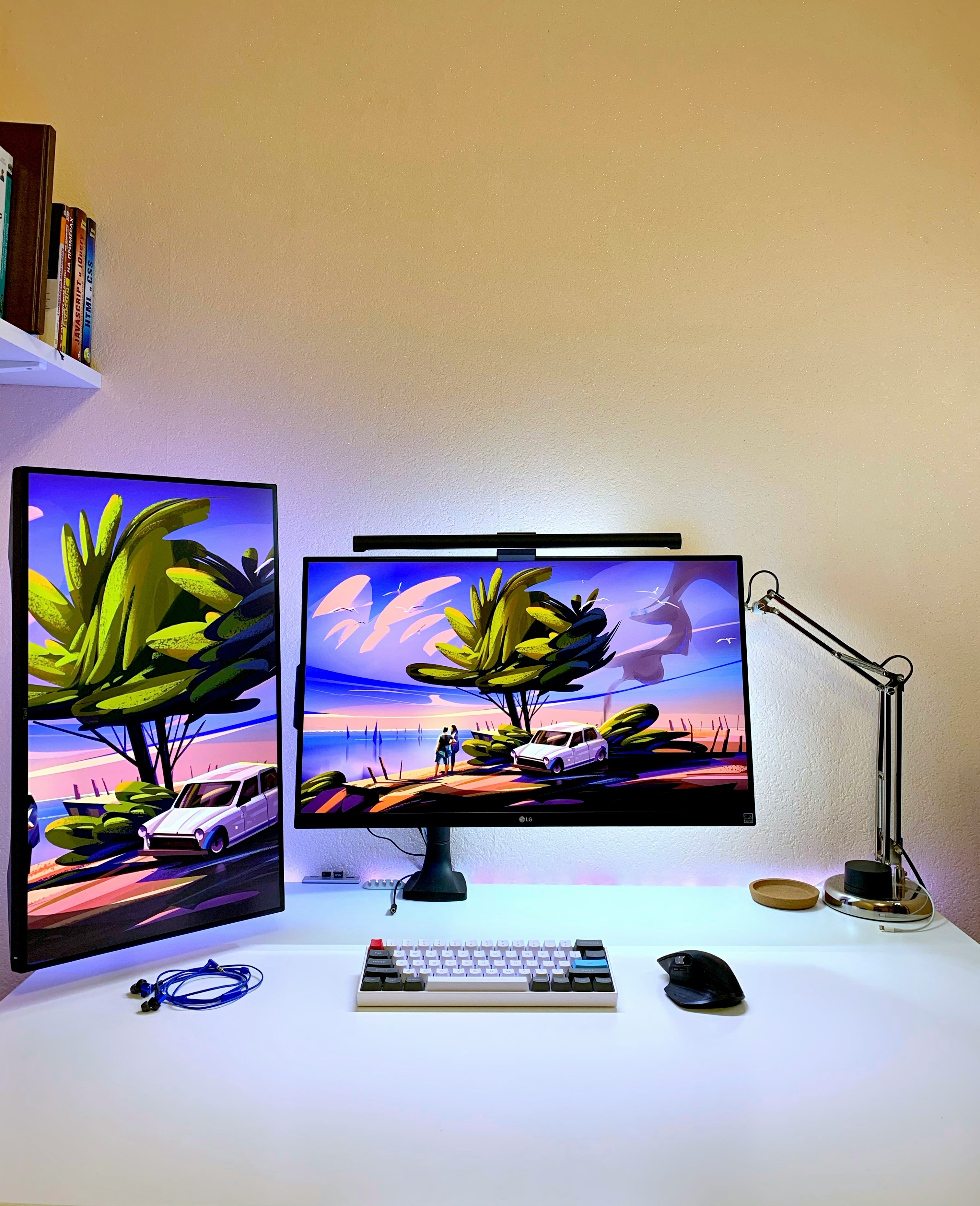The Essential Guide to Desk Monitor Mounts: Clamp, Grommet, or Freestanding?
In today's dynamic work environment, optimizing your desk space and ensuring ergonomic comfort are paramount. A crucial tool for achieving this is a reliable desk monitor mount. Moving your monitor off its stock stand frees up valuable real estate, allows for precise positioning, and can significantly improve your posture and productivity.
But with various types available, how do you choose the right one for your setup? This guide will break down the three primary categories of desk monitor mounts: clamp, grommet, and freestanding, helping you make an informed decision for your ideal workspace.
Why Invest in a Desk Monitor Mount?
Before we dive into the types, let's quickly reiterate the compelling benefits:
- Reclaim Desk Space: Free up precious room for notes, documents, or a tidier aesthetic.
- Ergonomic Positioning: Easily adjust monitor height, tilt, swivel, and rotation to prevent neck strain and improve posture.
- Increased Flexibility: Effortlessly move your screen closer, further, or reorient it from landscape to portrait mode.
- Improved Aesthetics: A sleek monitor arm can give your desk a professional and minimalist look, especially when paired with good cable management.
1. Clamp Mounts: The Go-To for Easy Installation
Clamp monitor mounts are the most common and easiest to install, requiring no drilling or permanent modification to your desk. They feature a C-clamp mechanism that tightens onto the edge of your desk.
Pros:
- Easy Installation & Removal: Set up in minutes with minimal tools. Great for temporary setups or if you move frequently.
- No Desk Modification: Leaves no holes or damage to your desk surface.
- Versatility: Works with most standard desks that have an open edge.
Cons:
- Edge Clearance Needed: Requires enough space at the back or side edge of your desk for the clamp mechanism.
- Desk Thickness Limitations: May not be compatible with overly thick or very thin desks.
- Stability: While generally stable, heavy monitors on thinner desks might cause slight flexing or instability if not properly secured.
Best Use Case:
Ideal for renters, users with solid, standard-thickness desks, or those who need a quick and non-permanent solution. Perfect for home offices and dynamic workspaces.
2. Grommet Mounts: For a Clean, Integrated Look
Grommet monitor mounts offer a more permanent and integrated solution. They typically attach to your desk through an existing cable management grommet hole, or by drilling a new hole (if you're comfortable doing so and own your desk).
Pros:
- Superior Stability: Provides a very secure and stable mounting point, ideal for heavier or multiple monitors.
- Clean Aesthetic: Cables can often be routed through the grommet hole as well, creating an exceptionally tidy setup.
- Less Desk Edge Requirement: Doesn't require a clear desk edge, making it suitable for desks flush against walls or with unique designs.
Cons:
- Installation Complexity: May require drilling a hole if one isn't present, making installation more involved.
- Permanent Modification: Leaves a hole in your desk.
Best Use Case:
Excellent for permanent office setups, gaming stations, or users who prioritize a minimalist, cable-managed aesthetic and don't mind modifying their desk.
3. Freestanding Mounts: The Portable and Flexible Option
Freestanding monitor stands (also known as freestanding monitor stands) do not attach to your desk at all. Instead, they sit directly on the desk surface using a heavy, stable base.
Pros:
- No Desk Attachment Required: Perfect for glass desks, antique tables, or any surface you cannot or do not want to clamp or drill into.
- Ultimate Portability: Easily moved from one desk to another without reinstallation.
- Quick Setup: Simply place it on your desk.
Cons:
- Takes Up Desk Space: The base occupies a footprint on your desk, potentially reducing usable area.
- Less Stable Than Clamp/Grommet: While bases are heavy, they can be more prone to wobble than securely attached mounts, especially with larger monitors or accidental bumps.
- Limited Adjustability: Some models may offer less range of motion compared to arm-based clamp or grommet mounts.
Best Use Case:
Ideal for rental properties, glass desks, shared workspaces, or anyone needing maximum flexibility for rearrangement.
Key Factors to Consider When Choosing Your Desk Monitor Mount
Beyond the type, keep these aspects in mind:
- Monitor Weight & Size: Ensure the mount supports the weight and screen size of your monitor(s). Check the VESA compatibility (75x75mm or 100x100mm are standard).
- Desk Thickness & Material: Crucial for clamp mounts. Ensure your desk can handle the pressure and weight.
- Adjustability Needs: Do you need height, tilt, swivel, and rotation? Do you need dynamic (gas spring) or static (manual) adjustments?
- Number of Monitors: Single, dual, triple, or even quad monitor mounts are available.
- Cable Management: Look for integrated cable management features in the arm or pole.
- Budget: Prices vary widely based on features, materials, and load capacity.
Elevate Your Workspace with the Right Mount
Choosing the right desk monitor mount is a significant step towards a more ergonomic, organized, and productive workspace. Whether you opt for the versatile clamp monitor mount, the integrated grommet monitor mount, or the portable freestanding monitor stand, understanding their unique advantages will help you make the perfect choice.
Ready to transform your desk? Explore Continews.com's extensive range of high-quality desk monitor mounts designed for every need and setup. Your ideal workspace awaits!
